#OpenStack
Explore tagged Tumblr posts
Text
OpenStack Storage Accelerates Multicloud Storage Automation

Dell storage family & OpenStack
OpenStack storage automates multicloud deployment, scalability, and data governance.
Modern data centres provide fast data access, fluid processes, and flexible operations. The purpose is to create creative and practical solutions for IT executives and DevOps professionals. OpenStack, a dependable open-source cloud platform, meets the demand.
The ability to combine OpenStack with Dell storage family is appealing. From on-premises to in-cloud, all connections streamline operations and optimise data management. Let's see how this synergy improves corporate operations with intelligent automation, flexible storage, and simple scaling.
Facilitating Agile IT Operations
OpenStack modernises data centre procedures by linking on-premises and cloud environments. Integration with Dell's enterprise-grade storage arrays PowerFlex, PowerStore, PowerScale, and PowerMax lets organisations expand precisely and eliminate inefficiencies.
These links are more than technological enhancements; they indicate a more flexible and successful operating approach. Dell's modular OpenStack and cutting-edge storage solutions ensure flexibility and reactivity, keeping enterprises ahead of shifting demands.
Main Benefits
Automate repetitive tasks with smart automation.
Use certified cloud-ready technologies that can manage many workloads for flexible storage.
Easy integration with Red Hat and Canonical OpenStack distributions for a unified cloud.
This comprehensive approach lets companies prioritise customer experience and strategic innovation.
Scalable, Flexible Storage
Cloud infrastructures store data, which is crucial to business success. Cinder (block storage) and Manila (file storage) drivers help OpenStack improve storage, while Dell's cutting-edge technologies augment them. OpenStack's flexibility helps organisations with multi-tenant deployments and corporate workloads.
Cinder Driver Block Storage
Dell's certified and verified Cinder drivers improve block storage management, making IT environments strong, adaptable, and ready to grow.
Dell Cinder Driver Benefits:
To meet rising demand, easily add, attach, or change quantities.
Protect vital data with automated snapshots and robust backups.
Dell PowerFlex, PowerStore, and PowerMax storage arrays connect easily.
File Storage with Manila Drivers
Dell Manila drivers optimise multi-tenancy and file sharing for file-based workloads.
Manila Dell Driver Benefits:
File-sharing is easier with CIFS and NFS capabilities.
Keep operational procedures operating smoothly with backup and snapshot management.
We support PowerStore, PowerMax, and PowerFlex.
Innovation and Collaboration in Open Source
The global OpenStack movement is driven by cooperation, not software. Dell actively improves code, fixes errors, and adds features to OpenStack. Businesses may access shared knowledge and innovative tools by joining this open-source community.
Businesses must do this to compete in a fast-changing tech landscape. OpenStack and other open-source technologies improve IT systems and let businesses use and contribute to cloud computing worldwide.
Why It Matters
Cloud technologies are driving corporate change, and enterprise IT is leading it. Businesses can confidently tackle modern IT difficulties with OpenStack's agility and Dell's cutting-edge solutions.
Automation, data security, and scalability are clear benefits of this collaboration:
Simplifying needless activities efficiently.
Adaptability to changing demands.
Innovation enables new solutions in many sectors.
OpenStack and Dell deliver the tools organisations need to innovate and increase efficiency.
Next Step
Agile, scalable, and Dell's enterprise-grade storage solutions make OpenStack a game-changer for IT managers eager to improve performance. You must improve your organisation and operations to survive in the fast-changing digital market.
Discover how Dell and OpenStack can enhance your IT infrastructure to remain ahead. With the proper partners and resources, your firm will succeed!
#technology#technews#govindhtech#news#technologynews#cloudcomputing#OpenStack storage#Dell storage family#OpenStack#Dell storage#Block Storage#File Storage
0 notes
Text
OpenStack suma una nueva página en la historia del código abierto al integrarse a la Fundación Linux
0 notes
Text

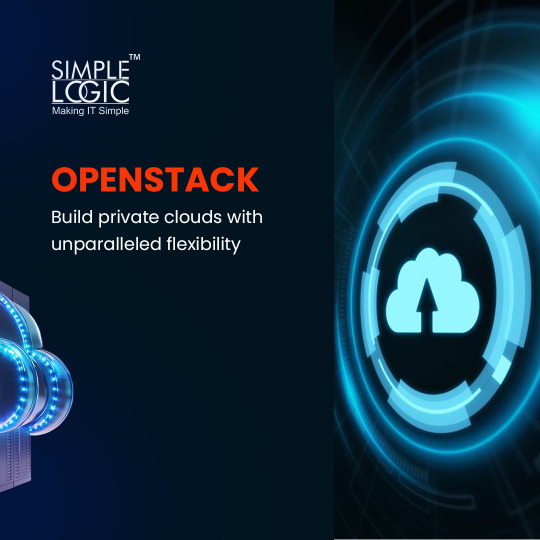
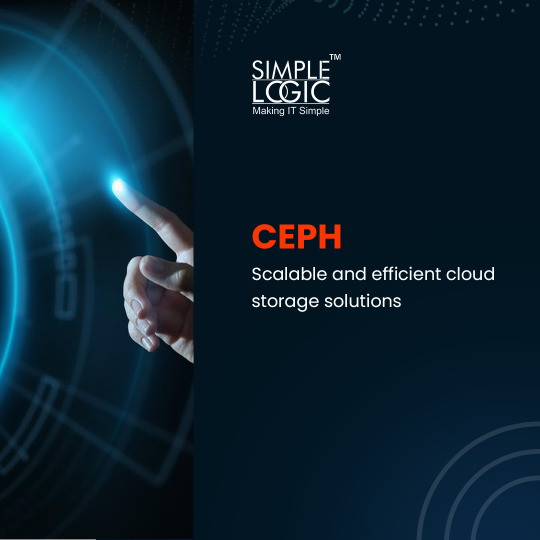

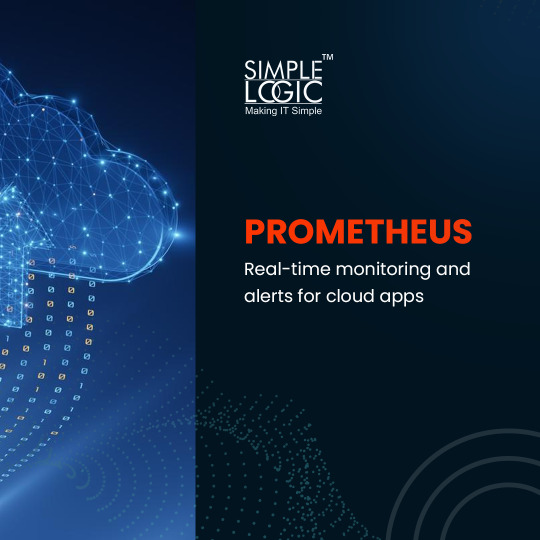


#DidYouKnow How Open Source Fuels Cloud Innovation! 🚀☁️
Swipe left to explore!
💻 Explore insights on the latest in #technology on our Blog Page 👉 https://simplelogic-it.com/blogs/
🚀 Ready for your next career move? Check out our #careers page for exciting opportunities 👉 https://simplelogic-it.com/careers/
#didyouknowfacts#knowledgedrop#interestingfacts#factoftheday#learnsomethingneweveryday#mindblown#openstack#ceph#ansible#prometheus#elasticsearch#opensource#cloud#cloudstrategy#didyouknowthat#triviatime#makingitsimple#learnsomethingnew#simplelogicit#simplelogic#makeitsimple
0 notes
Text

Dive into the world of cloud computing with DC Lessons' OpenStack courses! Master the open-source platform, enhance your skills in cloud infrastructure management, and embrace the future of IT. https://www.dclessons.com/category/courses/openstack
#OpenStack#CloudComputing#TechLearning#DClessons#CloudInfrastructure#ITTraining#ScalableCloud#ITPros#CareerDevelopment
0 notes
Text
looking new job
Hi guys I am looking new job for DevOps or OpenStack engineer.
can you recommend me
0 notes
Text
Continuing Under Global Upheaval
Hi there. Thank you for your continued support. While I have a lot I can talk about, it's going to be hard to tackle it all at the depths I want with the time I have. So I would like to do what I can to keep everybody updated.
Here we go.
OpenStack and Sunbeam on Ubuntu Linux, planned for Run #4
A SansIsSleeping Run Cannot last forever; 3000 Years At Most before KillScreen imminent. (Edit: 120? Edit 2: Wait, Nevermind)
2+ Years in SansIsSleeping as of September 16, 2023.
2+ Years in SansIsSleeping run #2, as of October 21st, 2023.
Unauthorized Shoutout Event in June 2023?
International Historical Revisionism, Genocide
So. Let's take it as best as I can. Thank you all for your support and interest.
Sunbeam, OpenStack, Ubuntu Linux
Sunbeam is a quick way of installing OpenStack on Ubuntu GNU/Linux. Let's take that from the top. To run a multifeatured hypervisor with a web access panel, networking, data storage systems, users, user groups within domains, and virtual machines all in one system, you use OpenStack. This system can do even more than what I list, and it's all a free and open sourced software. It's big. Big corporations use it. But anybody can use it, too, and that's especially helpful because Canonical--the folk who maintain and keep Ubuntu GNU/Linux up-to-date--developed Sunbeam, which is like "OpenStack Essentials."
I've considered other hypervising systems to manage the variety of operating systems and mini systems needed to build what I think is the future of Slumberer Sentinels and SansIsSleeping. I want the ability for any user to collect a 'drop' of the current live run and see it replicated on their own device. That's quite a ways off, and I'd rather just have a run I can run, load, and save the state of the whole system so I won't lose progress. You need a hypervising system to run this computer, virtually, or else it will be like run #2: When the computer reboots, shuts down the whole operating system, or shuts down the game, the run is over. A hypervising system can run the computer like console emulation: it processes a simulation of a smaller computer with less resources within your current one. With this, I can save the whole operating system--not just the libTAS, tool-assisted UNDERTALE state. Here are some: OpenVMS, a classic mainframe system built to cluster across computers and hypervise them all has been ported to x86 systems; Archipel, a defunct free and open source hypervisor; and Proxmox, which is also free but lacks a few LXC/LXD hypervisor container features (I think, such as migrating them), were all considered. If you weren't free, you aren't on this list.
Sunbeam seemed to be delivered within the last year, which feels serendipitous to me. Canonical, developers of Ubuntu, created "AnBox Cloud," which is amazing and would add a layer of safety to prevent any of our own Android phones from being hacked. This is why I was familiar with some of the systems already in place for OpenStack on Ubuntu. Sunbeam may make this giant software ecosystem palatable for someone with constrained needs, such as myself or any of you: hypervised computers are the future of safe and networked computing.
Do I know how to use Sunbeam? Not very much. But I'll hack away at it once I get it installed on my Ubuntu on a computer I've been using personally until I knew how to avoid how run #1 ended on TrueNAS. Due to the global economic crunch, I will have more time to do this once I get a windfall of cash, like a MacArthur grant. XD
SansIsSleeping Runs Cannot Last Forever !!!!
EDIT 2: This whole below section is outdated! This whole sleeping scene may be loopable forever. Yeeyyy :D See the link at the end.
This is obvious to people who know UNDERTALE very well. Unfortunately, I needed this explained to me by two kindly members of the tasvideos.org community. When I brought this 'droplet sharing' idea to TASVideos, I imagined I would be at a blockade: if i was so busy, how could I develop all I needed? Wouldn't I need some software? Was anyone familiar with running UNDERTALE with libTAS tools? I thought I would need to have the machine running UNDERTALE also stream that video out instead of have its video be captured, and I thought from an old YouTube video's theory that the only event that takes place while Sans is sleeping is a loop with an iterator. I was wrong--the only way for this run to last 'eternity' is for Sans' Zs to be recycled objects, and they aren't.
OceanBagel pointed out to me that there's a limit to how many objects can be created and destroyed in GameMaker games, and if that ecosystem isn't safely maintained and monitored, new objects will take the unique number addressed to older objects once the incredibly large iterating number loops around. This scene in UNDERTALE has this delightful limitation, as every Z of Sans is created as unique. ( <3 ). Computers, to avoid corrupting other pieces of data in memory, will limit the size of numbers and strings of text characters to a predefined limit of bytesize. In this case, the integer is giant. D1firehail suggested this giant integer would hit its upper limit, cycle back to its bottom limit and back to 0 after about 2997 years. You heard that right. This is a pretty reasonable 'eternity.' :)
Two Years of Sans Is Sleeping; Two Years in Run #2.
This is pretty astounding. In my research to possibly get my CISSP certification, I found about a term about "Mean Time Between Failures." I never looked this up on the laptop running Sans Run #2, so it must be greater than two years--the laptop hasn't failed yet. It's been me, who has! I accidentally shut down the desktop service, which luckily rebooted after my accident. I've messed up my home network many times trying to change DNS servers, trying to move Ethernet cables and update routers, and sometimes I've lost internet just because my ISP decided to randomly cancel my contract.
Despite all my hardware and network juggling, the laptop has held on. If I am lucky enough to move, I will need to research getting a portable hotspot so I could move to a new home, and keep the stream running via this mobile hotspot. I hope our internet would be hooked up fast--I'm not about to colocate this laptop in a hosting facility. :')
Thank you for everything. We are almost at 1,700 followers. In November, I expect to have an appointment time with a legal aid group that runs a day full of free appointments for non-profits. I expect they might give me ideas of legal structures for SansIsSleeping, Slumberer Sentinels, and other non-business entities like unions, trusts, and whatnot. Desert Bus for Hope started out as something like this, I figure. Would they need to hire a trucking union to run the bus 24/7? :)
Unauthorized Shoutout Event, June 2023?
So, for those of you who don't know, in the beginning of June I had the inspiration to change my home network setup. This was before I learned how to do a 'demilitarized zone,' and before I understood NAT, and technically, let's say I still don't really understand how deep this rabbit hole will go. In the middle of this, I thought it would be easy to change my home network, so I could have router with trusted connections, and a router simply to untrusted connections and as gateway to the whole internet. This is when I went to one of the computers still running the stream to check uptime, and noticed a strange, unauthorized Twitch shoutout.
Perhaps a user I gave mod privileges was playing a prank on me. Perhaps my laptop or my phone was hijacked in the past without my knowing, and this moment was when the network presence revealed itself. Perhaps it's the shock that troubled me on April 28th, 2023, with a growing acquaintance announcing dark wishes of being as 'evil' as it might be possibly recognized, and this person's statements coinciding with bad accidents simultaneously happening in real life. Maybe they were wanting to prank me as a one-year-old revert to Islam. Do I know? Unfortunately, I don't.
As a result, I pulled all my trusted home data servers offline. I updated my router softwares. I began the installation of intrusion detection systems (IDS), and just recently began deciding how to securely partition my home network into a DMZ (Demilitarized Zone) and a Trusted zone.
This is not my day job, and might be a distant relative of the web developer work I professionally did nine years ago.
International Historical Revisionism, Genocide
It's for all the above that I've tried to take things slowly, even as there is incredible violence internationally. I'm sure other users have had their Twitch accounts hacked. What have they done? And how involved can I be in such a giant Red Team VS Blue Team / Cybersecurity warzone as a single person?
I'm pretty sure Toby Fox might feel something like this, it's just I'm grateful he's likely had 7 to 8 years to meet the people who might help him protect himself and his works. I'm still meeting folk who are helping me, like Alex, Slab, Taingel, Ali (born4ready), and those who help me just survive in personal matters. Thank you for all you've done to help me, include you whom I have not listed.
There is so much going on that I've done my best to update the title of the stream with the latest vulnerability of human beings to systemic violence--like from coordinated groups, agencies, or policies beyond just one non-plural identity. It's hard to face all this and avoid "compassion fatigue." So I hope you show self-compassion.
It's easier for me to pray to G*d than it is to pray to any group I'd tokenize somehow. I pray for the good to be brought out in anything and everything, for it to shine, and for the end of elevating one nonconsentual violence over another.
Peace be upon you.
====
Edit 1: OceanBagel updated me to think that these numbers (his calculation/formula) would be *much* less than 3000 years. 121? Thank you, OceanBagel. ^-^
4,294,967,295 instances * (80 frames / 3 instances) * (1 second / 30 frames) * (1 minute / 60 seconds) * (1 hour / 60 minutes) * (1 day / 24 hours) * (1 year / 365.25 days)
Edit 2: Eternity's BACK ON, baby!!
OceanBagel has suggested that no problem with instance collisions will happen unless you actually interface with the battle. I guess we'll see in a few tens of decades! :)
1 note
·
View note
Text
コンピューターシステムの構成管理
場末のプログラマーとしてのキャリアは長いものの、大きな企業内のコンピューターシステムを管理するといった仕事はしたことはありません。だからと言って知らないでは済まされないように感じます。 モノづくり塾では生産系とIT系のどちらもモノづくりの対象として扱いますし、最近流行りのWeb 3.0やブロックチェーンといったものの仕組みを理解しシステムを構築できるようになることは、これからモノづくりやITの世界で活躍していくには必要な技能だと思います。 所謂Web…
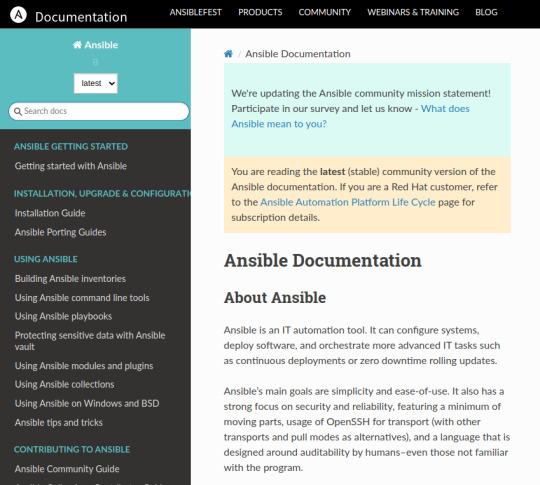
View On WordPress
0 notes
Link
This week's issue contains some of the most interesting articles and news, selected from all the content published in the previous week on the Developers News website. In this issue you will read about, Container Face-Off, React 18 with Redux, Continuous Testing, Kubernetes vs OpenStack, Tech Books, Go Pointer, FastAPI, Helm, SQL JOIN, and more
#devs_news_weekly#devs_news#react#javascript#kubernetes#OpenStack#go#FastAPI#Helm#book#sql#container#microservices#redux
0 notes
Text
this cloud computing class makes me want to cry
#erixbabbles#like i want to pull my hair out sm!!!!!!!!!!!!!!#i hate openstack!!!!!!!!!!!!!!!!!!#i hate linux!!!!!!!!!!!!!!!!!!!!!!!!!!!!!!!!!!!!!
0 notes
Text
OpenStack Services and Digital Transformation: Market Perspectives
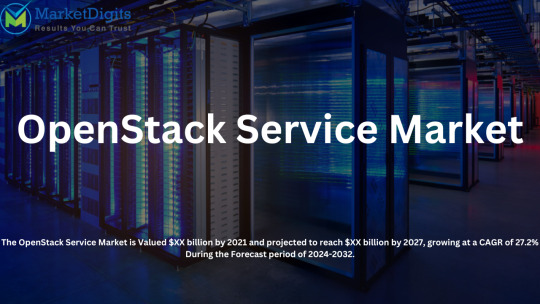
Introduction to OpenStack Service Market
The OpenStack Service Market revolves around cloud computing solutions based on the OpenStack platform, an open-source software for creating and managing public and private clouds. This market includes various services like consulting, integration, support, and managed services, catering to enterprises aiming to deploy scalable cloud environments. The rising demand for hybrid cloud solutions, cost-effectiveness, and the flexibility offered by OpenStack are key drivers of this market. It appeals to industries like IT, telecommunications, and financial services, seeking to modernize infrastructure and enhance operational efficiency. The market is competitive, with players like Red Hat, IBM, and Canonical offering tailored OpenStack services.
Market overview
The OpenStack Service Market is Valued $XX billion by 2021 and projected to reach $XX billion by 2027, growing at a CAGR of 27.2% During the Forecast period of 2024–2032.This growth is driven by the increasing adoption of cloud computing, the need for scalable and flexible infrastructure, and the growing popularity of hybrid and multi-cloud environments.
Access Full Report : https://www.marketdigits.com/checkout/334?lic=s
Major Classifications are as follows:
By Component
Solution
Services
By Organization Size
Large Enterprises
SME’s
By Vertical
BFSI
IT & Telecommunication
Government & Defense
Manufacturing
Academic & Research
Retail & Ecommerce
Key Region/Countries are Classified as Follows: ◘ North America (United States, Canada, and Mexico) ◘ Europe (Germany, France, UK, Russia, and Italy) ◘ Asia-Pacific (China, Japan, Korea, India, and Southeast Asia) ◘ South America (Brazil, Argentina, Colombia, etc.) ◘ The Middle East and Africa (Saudi Arabia, UAE, Egypt, Nigeria, and South Africa)
Major players in OpenStack Service Market:
Cisco Systems, Oracle, Red Hat, Hewlett Packard Enterprise, Canonical, VMware, Huawei, SUSE, Dell EMC, IBM, Rackspace, Mirantis, Platform9 Systems, EasyStack and Bright Computing among others.
Market Drivers in OpenStack Service Market:
Rising Cloud Adoption: As businesses increasingly migrate to cloud environments, the demand for flexible and scalable infrastructure solutions like OpenStack continues to grow.
Hybrid and Multi-Cloud Strategies: Organizations are adopting hybrid and multi-cloud strategies to avoid vendor lock-in, optimize costs, and improve resilience. OpenStack service market compatibility with various cloud platforms makes it a preferred choice.
Cost Efficiency: OpenStack’s open-source nature allows organizations to reduce licensing costs and customize their cloud environments according to specific needs, making it a cost-effective alternative to proprietary solutions.
Market challenges in OpenStack Service Market:
Complexity of Deployment: Setting up and managing OpenStack service market can be complex, requiring skilled personnel with specialized knowledge. This complexity can deter organizations without the necessary expertise or resources.
Integration Issues: Integrating OpenStack service market with existing IT infrastructure and other cloud platforms can be challenging, particularly in hybrid or multi-cloud environments. Compatibility and interoperability concerns can lead to higher costs and longer deployment times.
Security Concerns: Although OpenStack service market offers robust security features, the open-source nature of the platform can raise concerns about vulnerabilities and the need for constant monitoring and updates to address security threats.
Market opportunities in OpenStack Service Market:
Expanding Hybrid and Multi-Cloud Adoption: As more organizations adopt hybrid and multi-cloud strategies to optimize costs and increase flexibility, OpenStack service market compatibility with various cloud environments positions it as a key enabler for these deployments.
Edge Computing: The rise of edge computing, where data processing occurs closer to the source, creates opportunities for OpenStack to support distributed cloud architectures. OpenStack service market modular nature makes it well-suited for edge deployments, particularly in industries like telecommunications and IoT.
Growing Demand for Open-Source Solutions: As enterprises seek to avoid vendor lock-in and reduce costs, the demand for open-source solutions like OpenStack continues to grow. This trend opens up opportunities for service providers to offer customized, cost-effective cloud solutions.
Future trends in OpenStack Service Market:
Increased Adoption of Hybrid Cloud Solutions: As organizations continue to pursue hybrid cloud strategies, OpenStack service ability to integrate seamlessly with public and private clouds will drive its adoption. This trend will be particularly strong among enterprises looking to balance control, cost, and flexibility.
Edge Computing and IoT Integration: The growth of edge computing and the Internet of Things (IoT) is likely to boost OpenStack’s relevance. OpenStack service market modular architecture can be adapted for edge deployments, enabling real-time data processing closer to the data source and supporting industries like telecommunications, smart cities, and autonomous vehicles.
Expansion into Emerging Markets: The adoption of OpenStack service is expected to grow in emerging markets, driven by increasing digital transformation efforts, the demand for affordable cloud solutions, and the expansion of IT infrastructure in regions like Asia-Pacific, Latin America, and Africa.
Conclusion:
The OpenStack Service Market is poised for significant growth, driven by the increasing adoption of hybrid and multi-cloud strategies, advancements in edge computing, and the rise of containerization technologies. With a focus on security, compliance, and industry-specific solutions, OpenStack offers a flexible and cost-effective alternative to proprietary cloud platforms. Future trends such as AI integration, automation, and sustainability will further enhance its appeal. As the ecosystem expands and emerging markets embrace cloud technologies, OpenStack is well-positioned to meet evolving demands and capitalize on new opportunities in the global cloud landscape.
#OpenStack Service Market demand#OpenStack Service Market share#OpenStack Service Market size#OpenStack Service Market trend
0 notes
Text
Red Hat Lanza OpenStack Services para Facilitar la Gestión de Redes en Telecomunicaciones
Red Hat, líder en software de código abierto, ha anunciado la disponibilidad general de su plataforma s, un movimiento estratégico diseñado para ayudar a proveedores de telecomunicaciones y empresas a unificar y simplificar la gestión de sus redes. El lanzamiento de Red Hat OpenStack Services en OpenShift está dirigido a facilitar el manejo de las complejidades de las aplicaciones virtualizadas,…
0 notes
Text
OpenStack Tutorial: Your Step-by-Step Guide to Mastering Cloud Infrastructure
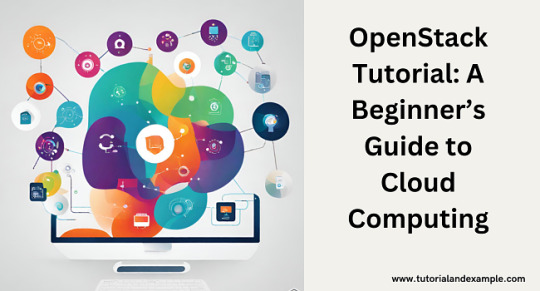
In today’s world, managing and deploying large-scale applications has become easier with cloud computing. OpenStack stands out as a powerful open-source platform that enables companies to create and manage their own cloud infrastructure.
What is OpenStack?
OpenStack is a cloud computing platform that allows businesses to set up and manage their own private or public clouds. It’s like having your own AWS or Google Cloud, but customized to fit your needs. OpenStack provides a range of tools to manage compute, storage, and networking resources in a data center.
Why Use OpenStack?
OpenStack is popular because it’s flexible, scalable, and open-source. This means you can adapt it to suit your specific requirements, grow your cloud resources as needed, and benefit from a vast community of contributors who continually improve the software. Whether you’re a small startup or a large enterprise, OpenStack can help you manage your IT infrastructure efficiently.
Key Components of OpenStack
Nova (Compute): Handles the creation and management of virtual machines.
Swift (Storage): Provides scalable object storage.
Neutron (Networking): Manages networking services like IP addresses and firewalls.
Cinder (Block Storage): Offers persistent block storage for instances.
Horizon (Dashboard): A web-based interface for managing OpenStack services.
Getting Started
Starting with OpenStack may seem daunting, but with the right resources, it’s accessible. For a detailed step-by-step guide, check out this OpenStack Tutorial. It provides comprehensive instructions to help you set up and use OpenStack effectively.
With OpenStack, you have the power to control your cloud environment, making it a great choice for organizations looking to leverage cloud computing without relying on third-party providers.
Explore the OpenStack Tutorial to get started on your cloud journey!
By understanding and implementing OpenStack, you’re on your way to mastering modern cloud computing infrastructure.
1 note
·
View note
Text
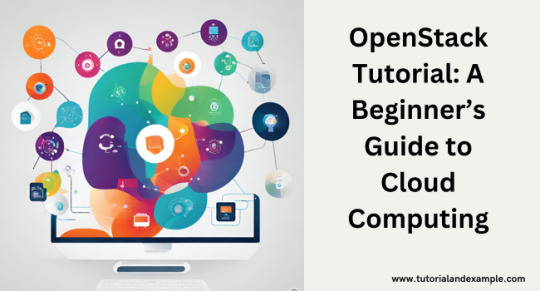
Learn OpenStack through a comprehensive tutorial covering installation, configuration, and management of cloud infrastructure. Ideal for beginners and developers seeking to leverage open-source solutions for cloud computing.
0 notes
Text
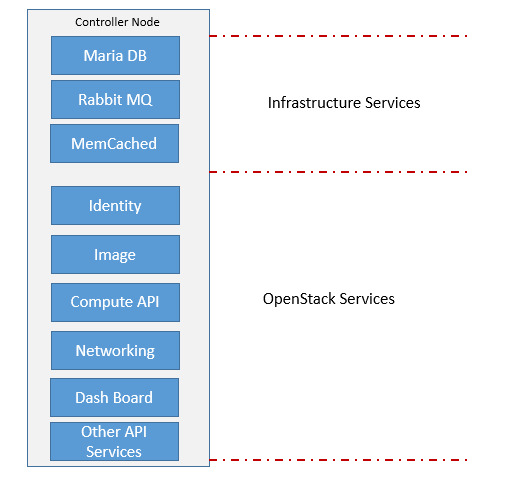
Shape the cloud with #OpenStack expertise. Discover courses that demystify cloud architecture and administration. Become a part of the open-source revolution driving cloud innovation. https://www.dclessons.com/openstack-clustering-services
#CloudOrchestration#OpenSourceTech#OpenStack#ClusteringServices#DCCLessons#CloudComputing#Virtualization#Infrastructure#HighAvailability#OpenSource#TechTutorials#OpenStackTutorial#CloudInfrastructure#OpenStackCluster#OpenStackTraining#DataCenter#ITLearning
0 notes
Video
youtube
OpenStack 3 Node Cluster on Ubuntu Installing and Configuring Cinder Blo...
#youtube#🎥 Explore the world of OpenStack with our step-by-step tutorial! In this video we'll guide you through the process of setting up a 3 Node C
0 notes
Text
Empowering India's IT Infrastructure with Kubernetes, and OpenStack Architecture
Kubernetes, often referred to as K8s, is an open-source container orchestration platform that has revolutionized the way applications are deployed, managed, and scaled. Its impact on India's IT landscape is profound, as businesses across industries are adopting Kubernetes architecture for its agility, scalability, and ease of management. For more details visit here:-> https://cossindiaa.blogspot.com/2023/10/openstack-architecture.html
#kubernetes architecture#linux certified system administrator#openstack architecture#openstack training#red hat certified#red hat certification course#red hat certified system administrator#red hat certification#red hat certified engineer
0 notes